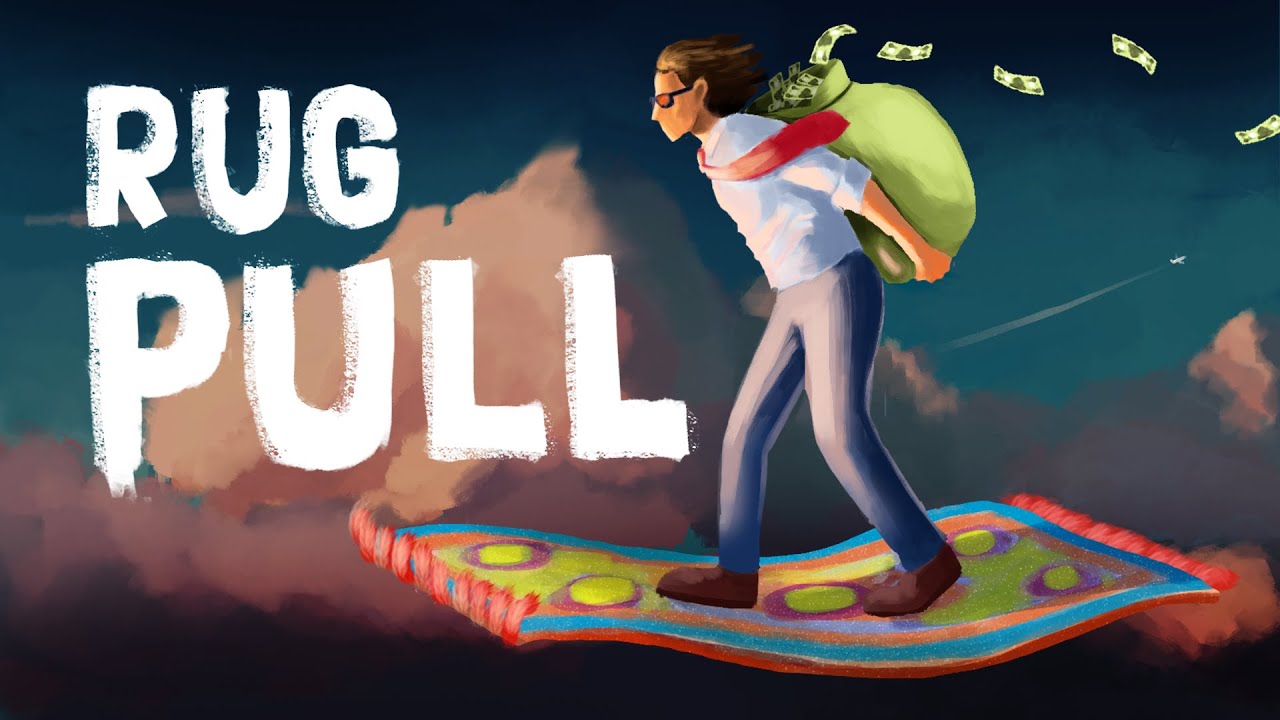Key Takeaways
- Rug pulls are harder to spot in 2025, but transparent smart contracts, locked liquidity, and verifiable teams drastically reduce risk.
- Unrealistic tokenomics, hidden taxes, and aggressive marketing are major red flags.
- Always check liquidity locks, contract ownership, and community behavior before investing.
Rug Pulls Haven’t Disappeared — They’ve Evolved
By 2025, crypto markets are more mature, but rug pulls continue to haunt investors across meme coins, DeFi protocols, and newly launched tokens. Despite stricter regulations and improved blockchain analytics, scams have simply adapted.
The modern rug pull is no longer just a team draining liquidity overnight—it can involve hidden contract functions, misleading tokenomics, or coordinated social manipulation. That’s why identifying a rug pull in 2025–2026 requires a blend of technical literacy, community awareness, and skepticism.
Whether you’re investing $20 in a meme coin or exploring a new DeFi project, here’s how to spot the danger before it empties your wallet.
Check the Liquidity—It’s the First and Biggest Signal
Liquidity is the lifeblood of any crypto token. Without it, holders cannot trade, and prices can be manipulated instantly. The majority of rug pulls in 2024–2025 succeeded because the team controlled liquidity.
What Safe Liquidity Looks Like:
- Liquidity is locked for a clear period (e.g., 6–24 months)
- Lock information is public and verifiable through reputable platforms
- Liquidity pool ownership is renounced or held by a multisig
- A majority of tokens are not controlled by the team
Major Red Flags:
- No liquidity lock
- Short lock windows (e.g., 7 days)
- Huge developer-owned liquidity share
- Sudden liquidity transfers shortly after launch
If liquidity isn’t locked, the team can pull every dollar out of the project in seconds.
Examine the Smart Contract for Hidden Risks
Smart contracts are where many 2025 rug pulls hide their traps. Even non-developers can identify warning signs using public tools.
Key Things to Check:
- Minting Function: If still active, developers can create unlimited tokens and dump them.
- Trading Restrictions: Some contracts block selling, allowing only buys.
- Owner Privileges: Excessive admin control is a top rug-pull indicator.
- High or Adjustable Taxes: Hidden buy/sell taxes of 20–100% still appear commonly.
- Blacklist Functions: Can enable freezing of certain wallets.
Tools like TokenSniffer, RugDoc, and chain explorers help identify these issues quickly.
If You See This—Walk Away Immediately:
- Contract owner can change taxes anytime
- Whitepaper avoids mentioning contract controls
- No public audit or code verification
By 2025, legitimate teams renounce ownership or use multisig wallets to limit abuse.
Look Closely at the Team and Their Transparency
The crypto community has grown more suspicious of anonymous developers—especially after major 2024 and 2025 rug pulls. While anonymity isn’t automatically bad, transparency is key.
Healthy Signs:
- Public team profiles or partial doxxing
- Verified LinkedIn, GitHub, or previous project history
- Regular communication across channels
Rug Pull Warning Signs:
- Anonymous founders who avoid voice chats
- No social profiles or newly created accounts
- Overly polished marketing with no real substance
- Team refuses to answer questions about tokenomics or liquidity
If the team disappears during the launch week, it’s a clear red flag.
Analyze the Tokenomics for Fairness and Functionality
In 2025–2026, tokenomics determine whether a project is sustainable or built purely for extraction.
Safe Tokenomics Include:
- Reasonable team allocation with vesting
- Transparent supply distribution
- No hidden fees or complex tax systems
- Sustainable incentives, not unrealistic milestone promises
Rug Pull Tokenomics Often Include:
- Massive team allocations without vesting
- Complicated reward structures meant to confuse investors
- Huge supply minted to insiders early
- Extremely low liquidity compared to market cap
If the numbers don’t add up, the project probably doesn’t either.
Watch Community Behavior—It Reveals What Charts Cannot
A project’s community in 2025 is often the fastest way to sense a rug pull.
Rug Pull Community Characteristics:
- Overhyped language (“1000x guaranteed,” “next DOGE,” “inevitable moonshot”)
- Mods delete questions about liquidity or tokenomics
- Paid shills or bots flooding social channels
- No real discussion—only price obsession
Healthy Communities:
- Transparent discussions
- Developers answering technical questions
- Organic memes and growth
- Balanced expectations
If the community feels manufactured, it usually is
Check the Chart for Patterns of Manipulation
Charts tell the truth even when communities don’t.
Major Chart-Based Rug Pull Signs:
- Parabolic rise with almost no dips—often bot-driven
- Constant upward movement despite low social presence
- Sudden massive sell-off from one or two wallets
- No trading volume between buys—indicating artificial volume
Modern scams often pump the token artificially, lure real buyers, then dump liquidity.
Stay Alert to Social Manipulation Tactics
By 2025, scammers rely heavily on psychological manipulation:
- Fake influencers promoting the project
- “Limited-time mint” pressure tactics
- Fake screenshots of exchange listings
- Coordinated Twitter threads to simulate organic hype
Real projects grow steadily. Fake ones rush investors.
Conclusion: In 2025–2026, Protection Comes From Awareness—Not Luck
Rug pulls haven’t vanished—they’ve simply matured. But so have the tools and knowledge available to investors. Learning how to identify a rug pull in 2025 means focusing on liquidity, smart contracts, team transparency, and genuine community behavior.
If something feels off, rushed, or overpromised, trust that instinct. In crypto, skepticism isn’t negativity—it’s survival.



